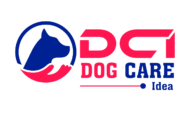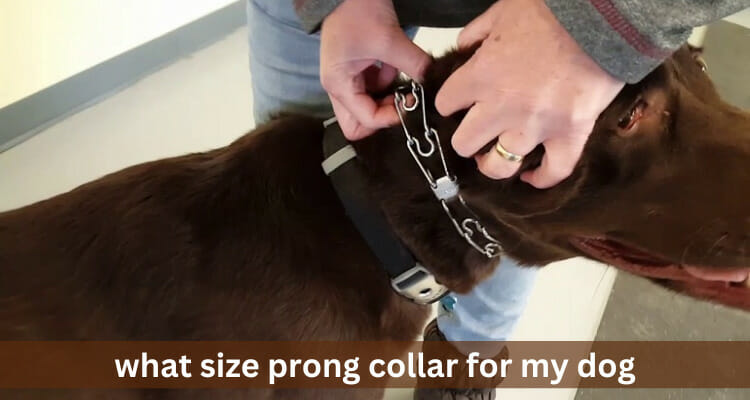The best way to train a dog is to make them understand what you want from them and believe that it’s in their best interest.
Training your dog with an electronic collar needs patience and consistency. Focus on positive reinforcement, give clear commands and reward desired behaviors to get the best results. Seek professional advice if needed.
In this article, we will guide you step by step about how to train a dog with an electronic collar to help you to train the dog.
Lets Get Started!
Step by Step Guide on How to Train Dog with E Collar
The following are step by step guides on how to train your dog with an electronic collar.
Step 1: Introduce the Electronic Collar to Your Dog
Before you start using an electronic collar for training your dog, introduce the collar and its purpose. Have your pup wear it around the house for short periods of time, preferably when they’re engaged in play or calm activities. This will help them become comfortable with the sensation of wearing a collar and minimize any possible negative reactions.
Step 2: Select the Right Level for the E-Collar
Before you begin using the e-collar, it’s important to select a level of stimulation that your pup will respond to without becoming overly distressed or uncomfortable. It’s best to start at a moderate intensity and increase gradually if needed.
Step 3: Use the E-Collar as a Reinforcement or Reminder
Once you have selected an appropriate level of stimulation, you can use the e-collar to reinforce commands or behaviors that you have taught your pup. For example, if your dog fails to come when called, give them a gentle reminder using the e-collar. This will help them understand that they are expected to follow commands.
Step 4: Make the E-Collar a Part of Your Training Routine
The e-collar should be used as an aid in your dog’s training. Use it consistently and clearly during training sessions, and make sure you reward your pup for following commands or demonstrating good behavior.
This will help them associate the e-collar with positive reinforcement and make it more effective for training purposes.
Step 5: Monitor Your Dog’s Response to the E-Collar
Pay attention to how your dog responds when using the e-collar and modify intensity levels as needed. Additionally, take regular breaks from using the e-collar to ensure that your pup remains comfortable and relaxed during the training process.
Step 6: Practice with the E-Collar Regularly
To maintain the effectiveness of the e-collar, it’s important to practice regularly. This will help reinforce proper behaviors and keep your dog from forgetting commands or becoming unresponsive when using the right type of electronic collar for your dog.
Depending on the size and breed of your dog, consider a static shock collar, vibration-only collar or a combination static/vibration collar.
How to use an e collar for recall
Sure, here is a step-by-step guide on how to use an e-collar for recall training with unique content for each step:
Assess your dog’s temperament and training needs:
Before using an e-collar for recall training, it’s important to assess your dog’s temperament and training needs. Some dogs may be more sensitive to the collar than others and may require a gentler approach. It’s also important to identify any underlying behavior issues that may be contributing to your dog’s poor recall.
Choose the right type of e-collar
There are different types of e-collars available, including static, vibration, and sound-based collars. Choose the type of collar that is most appropriate for your dog’s temperament and training needs. For example, if your dog is sensitive to static shocks, you may want to consider a vibration or sound-based collar.
Train your dog to associate the e-collar with positive experiences
Before using the e-collar for recall training, it’s important to train your dog to associate the collar with positive experiences. Start by placing the collar on your dog and giving them treats and praise. This will help your dog to feel comfortable and confident while wearing the collar.
Use the e-collar to reinforce positive behavior:
When using the e-collar for recall training, it’s important to use it to reinforce positive behavior, rather than as a punishment tool. For example, when your dog comes to you when called, use the e-collar to deliver a vibration or sound-based signal, followed by treats and praise.
Start with low levels of stimulation:
When using the e-collar for recall training, start with the lowest level of stimulation and gradually increase it until you find the level that your dog responds to. It’s important to use the minimum level of stimulation necessary to achieve the desired behavior.
Practice recall training in a controlled environment:
Before using the e-collar for recall training in an uncontrolled environment, such as a park or beach, practice in a controlled environment such as your backyard. Use positive reinforcement such as treats and praise to encourage your dog to come when called.
Gradually increase the level of distraction:
As your dog becomes more reliable with recall training in a controlled environment, gradually increase the level of distraction. For example, practice recall training in a park or other public area with other dogs and people around.
Remember, an e-collar should never be used as a substitute for proper training and positive reinforcement. Always consult with a professional dog trainer if you are unsure about how to use an e-collar safely and effectively.
Expert tips about how to train dog on e-collar
Sure, here are some more expert tips on how to train your dog on an e-collar:
Use a gradual approach
Gradual training is important when using an e-collar. Start by introducing the collar to your dog without stimulation and gradually increase the level of stimulation until they respond appropriately. This approach helps your dog adjust to the collar and reduces the risk of overstimulation.
Use the collar only for specific training tasks:
The e-collar should be used only for specific training tasks, such as recall training, and not for general behavior modification. Using the collar for inappropriate behavior can lead to confusion and fear in your dog.
Choose the right collar for your dog:
There are many different types of e-collars available, so choose the one that best fits your dog’s needs. Factors such as size, temperament, and training goals can all influence your choice.
Use positive reinforcement and rewards:
When using the e-collar, it’s important to combine it with positive reinforcement and rewards. This helps your dog understand that the stimulation is associated with positive behavior.
Be consistent with your training:
Consistency is crucial when training your dog on an e-collar. Use the same commands and signals each time you train and reward your dog consistently for desired behavior.
Know when to take a break:
E-collar training can be intensive and stressful for your dog, so it’s important to know when to take a break. If your dog seems stressed or anxious during training, take a break and resume when they are more relaxed.
Understand your dog’s body language:
E-collar training requires a deep understanding of your dog’s body language. Be sure to monitor your dog’s response to the collar and adjust the training approach accordingly.
Remember, e-collar training should always be done with care, patience, and expertise. Seek the advice of a professional trainer if you have any questions or concerns.
Precautions to consider on How to train dog with electronic collar
When using an electronic collar to train your dog, there are several precautions you should consider to ensure your dog’s safety and well-being. Here are some important precautions to keep in mind:
Use the e-collar as a last resort:
E-collars should only be used when other training methods have been unsuccessful. They are not a substitute for positive reinforcement and consistent training.
Use the right level of stimulation:
It’s important to use the appropriate level of stimulation for your dog’s temperament and size. Start with the lowest level and gradually increase it until your dog responds appropriately. Avoid using high levels of stimulation, which can cause pain or distress.
Don’t leave the collar on all the time:
It’s important to remove the collar when not in use. Leaving it on all the time can cause skin irritation and discomfort.
Don’t use the collar for punishment:
The e-collar should never be used for punishment or negative reinforcement. This can cause your dog to become fearful and anxious.
Monitor your dog’s behavior:
It’s important to monitor your dog’s behaviour and response to the collar. If your dog seems distressed or shows signs of pain, stop the training immediately.
Seek professional guidance:
If you are unsure about how to use an e-collar for training, seek professional guidance from a certified dog trainer. They can provide valuable advice and ensure that you are using the collar safely and effectively.
Remember, electronic collars are just one tool in your training toolbox. Positive reinforcement, consistency, and patience are key components of successful dog training, regardless of the methods used.
Conclusion
Training your pup with an electronic collar can be an effective way to teach obedience and establish a positive reinforcement system. It is important to start with the lowest setting on the collar and increase intensity only when necessary. Always remember to reward your pup for responding correctly, take breaks as needed, and monitor their behavior and attitude when using the collar. Speak to your vet or an animal behavior specialist if you have any questions or concerns, and keep the collar in a safe, secure place when not in use. With patience and practice, you can successfully train your pup with an electronic collar.
FAQS
Is it OK to train a dog with an e-collar?
Yes, when used responsibly and in conjunction with positive reinforcement, electronic collars can be an effective tool for training your pup. However, it is important to start with the lowest setting and increase intensity only when necessary.
How do you train a dog with an electric collar?
To train a dog with an electric collar, start by introducing your pup to the collar and getting them used to its feel and sound. Give your pup a verbal command and activate the stimulation button on the remote when they respond correctly. Increase the intensity of stimulation as needed, but be sure to reward your pup for responding correctly and practice regularly for best results.
How do you train a dog with a stimulator collar?
To train a dog with a stimulator collar, start by introducing your pup to the collar and letting them get used to its feel. Then, give your pup a cue command, such as “Come!” or “Here!” and activate the stimulation button on the remote when they respond correctly. As they become more familiar with the command, start to increase the stimulation level until they respond reliably.
How long should you train with e-collar?
The length of time you should train with an e-collar will depend on your pup’s individual temperament and progress. Generally, it is recommended to start with short training sessions and gradually increase the length of time as your pup becomes more familiar with the commands. Be sure to reward your pup for responding correctly and take breaks if needed.
Are e-collars humane?
Yes, when used correctly, electronic dog collars are humane and can be an effective tool for training your pup. It’s important to start by introducing your pup to the collar and getting them used to its feel and sound. Once your pup is comfortable, you can use the remote control to activate the stimulation button when they don’t comply with your commands.



